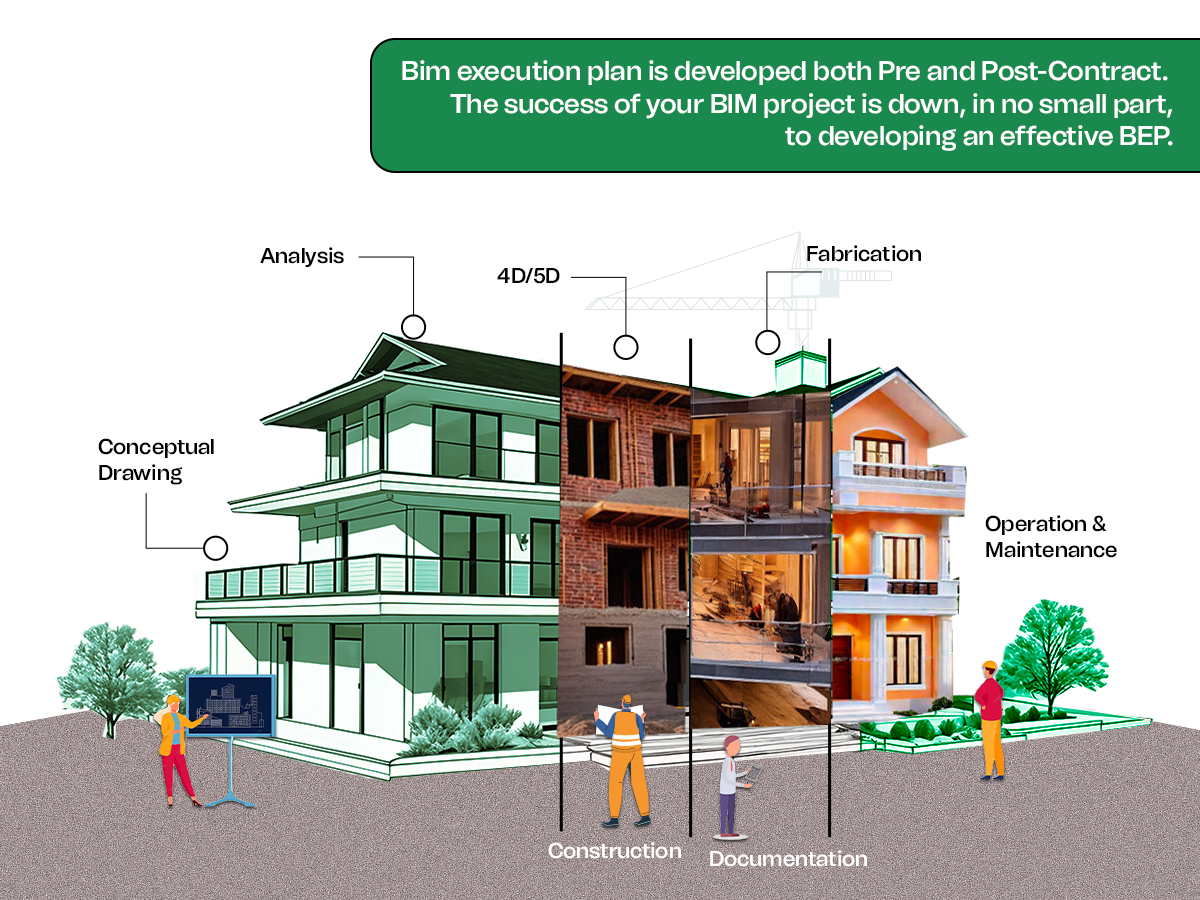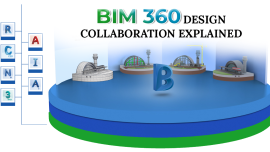
What is BIM Execution Plan (BEP)?
If you have been presented with Build Exchange Information Requirements (EIR) from your client and you need to be quickly following up a well-devised strategy. An effective utilization of suitable BIM software as per project requirements and a thoroughly documented plan can do the job for you on the project. And this very same documentation is known as BEP (BIM Execution Plan).
A significant BIM Execution Plan (BEP) is crucial for facilitating team members execution of BIM’s role in construction management. It is all about documentation efforts in one place, saving time and money by highlighting significant aspects and keeping track of project teams.
A BIM Execution Plan (BEP) is a crucial document outlining the execution, management, and delivery of a BIM project, ensuring stakeholder alignment and understanding of roles and responsibilities. It includes:
- Clear Timeline: The project schedule should include a start date, an expected completion date, a breakdown of phases, and estimated task durations. Also, any dependencies on each other’s completion.
- Milestones: This document outlines design, construction, and handover milestones for a project, outlining deliverables, critical phases, and milestones related to project handover.
- Checkpoints for quality assurance: BIM model quality, data integrity, coordination reviews, compliance checks, model management, and information exchange are crucial aspects of project management. These include defining standards for maintaining data consistency, resolving conflicts, and outlining procedures. This ensures compliance, assigns responsibilities, and ensures data exchange.
The ultimate goal of BEP (BIM Execution Plan) is to prevent chaos and avoid common pitfalls in project delivery.
Types of BIM Execution Plans
BIM execution plans could be categorized into two types, i.e., pre-contact BIM plans and post-contract BIM plans. Both of these types are detailed below for better comprehension of the subject:
Pre-contract BIM Plan Response to EIR (Employer’s Information Requirements)
Pre-contract implementation plans are initial proposals during procurement, presenting a provider’s recommended method, capacity, and details. They may meet the employer’s criteria or be developed by the supplier. Proposals demonstrate capability and approach against EIR.
Post-contract BIM Plan MIDP (Master Information Delivery Plan)
After signing a contract, a post-contract BIM plan is created to ensure supply chain capabilities and resolve outstanding details. A master plan and individual task information delivery plans are used to assign responsibility. The winning supplier presents a detailed BIM Execution Plan, focusing on supply chain capability, with a Master Information Delivery Plan.
How do I make a BIM Execution Plan (BEP)?
Creating a comprehensive BIM Execution Plan (BEP) involves a systematic approach to ensure the successful implementation of Building Information Modeling (BIM) within a project.
- It begins with compiling crucial project details such as budget, timeline, and scope of work while concurrently defining primary project goals.
- Then, a thorough assessment of how BIM can contribute to project goals is conducted, along with identifying the specific functions and responsibilities of all involved individuals.
- Deliverables are then meticulously identified across various project phases, laying the groundwork for selecting appropriate
- Moreover, defining contract conditions pertaining to BIM and formulating a robust BIM quality management strategy are necessary.
- After that, technology selection, encompassing software, data exchange protocols, and the network environment, is decided to facilitate seamless BIM integration.
- Establishing the project scope in relation to BIM, identifying stakeholders, determining staffing needs, and outlining target model users with BIM capabilities.
- Finally, setting collaborative goals and initiating BIM projects mark the commencement of implementation, supported by the establishment of modeling standards.
Each of these steps is critical in crafting a comprehensive BEP, fostering alignment, understanding, and effective execution among stakeholders, thereby ensuring the successful realization of the project’s BIM objectives.
Top 7 Benefits of a BIM Execution Plan in a Construction Project
During construction projects, plan execution is frequently stalled and buried in superfluous micro-details. It makes it difficult for project stakeholders to uncover and identify important data to keep projects moving ahead and producing on-time deliverables. BEPs that are properly developed assist teams stay on track by focusing on the key aspects, instead micro-details, saving time.
Below are seven significant benefits of developing and using BIM execution plans in your next building project.
Clear Communication
A proper BIM BEP supports communication amongst project stakeholders from the onset of the construction project. This enables project team members to manage responsibilities and ensure clear communication about the project.
Improved Collaboration
Each project is different from the others and has diverse requirements, regulations, and internal standards. A BEP helps the project team members collaborate in real time on different project phases. It will prevent conflicts among project tasks and allowing proper attention to the significant tasks.
Saving construction time
An obstacle that often arrives in a construction project is a compressed schedule. A well-structured BEP emphasizes the benefits of the project. None is bogged down by the provisions that may cause delays to the project deliverables. As an alternative, the vital aspects are executed, maintaining a deliverable schedule throughout the project.
Saving Money
BEP helps to save money and helps to finish the construction within budget. It helps owners and building contractors significantly. With the help of managing time, schedule, and labor, a BIM execution plan for contractors can significantly cut down on the cost of building construction.
Alignment on standards
Identifying that different regions may have distinct norms, standards, or regulations is especially significant for large or international projects. It is possible for international teams to work together using a unified strategy provided by the BIM execution plan, avoiding the development of incompatible and competing strategies.
Fast data sharing
Transparency is a great advantage of the BIM execution plan, as it is instantly available to all the project stakeholders from the very beginning of the construction project. As a result, contractors, owners, and others get direct access to BIM data like file formats, dimensions, and other details in a way that could be easily shared and updated.
Robust project execution
An effective plan focuses on the project rather than every standard. Construction team members are able to communicate and collaborate better from the initial stage, ensuring robust project execution and facilitating all project owners and shareholders. Accomplishing this plan helps to keep the building items accountable, ensuring completion on time and within budget.
Conclusion
The main goal of a detailed BIM execution plan is to foster communication and coordination among building project teams. There isn’t a single best practice for integrating BIM into construction projects. Teams should tailor their strategy to match the project’s objectives, characteristics, and resources. Therefore, for stronger project execution, improved timelines, and satisfied project owners, reach out to our expert BIM consultants.
Our team specializes in delivering comprehensive guidance on BIM execution plans for various project types, including residential, commercial, infrastructural, educational, and mixed-use projects. With our assistance, AEC team members can initiate major construction projects with confidence, ensuring seamless communication among stakeholders and efficient data sharing.
For more information, contact us at (202) 265-4830 or via email at info@tejjy.com.










